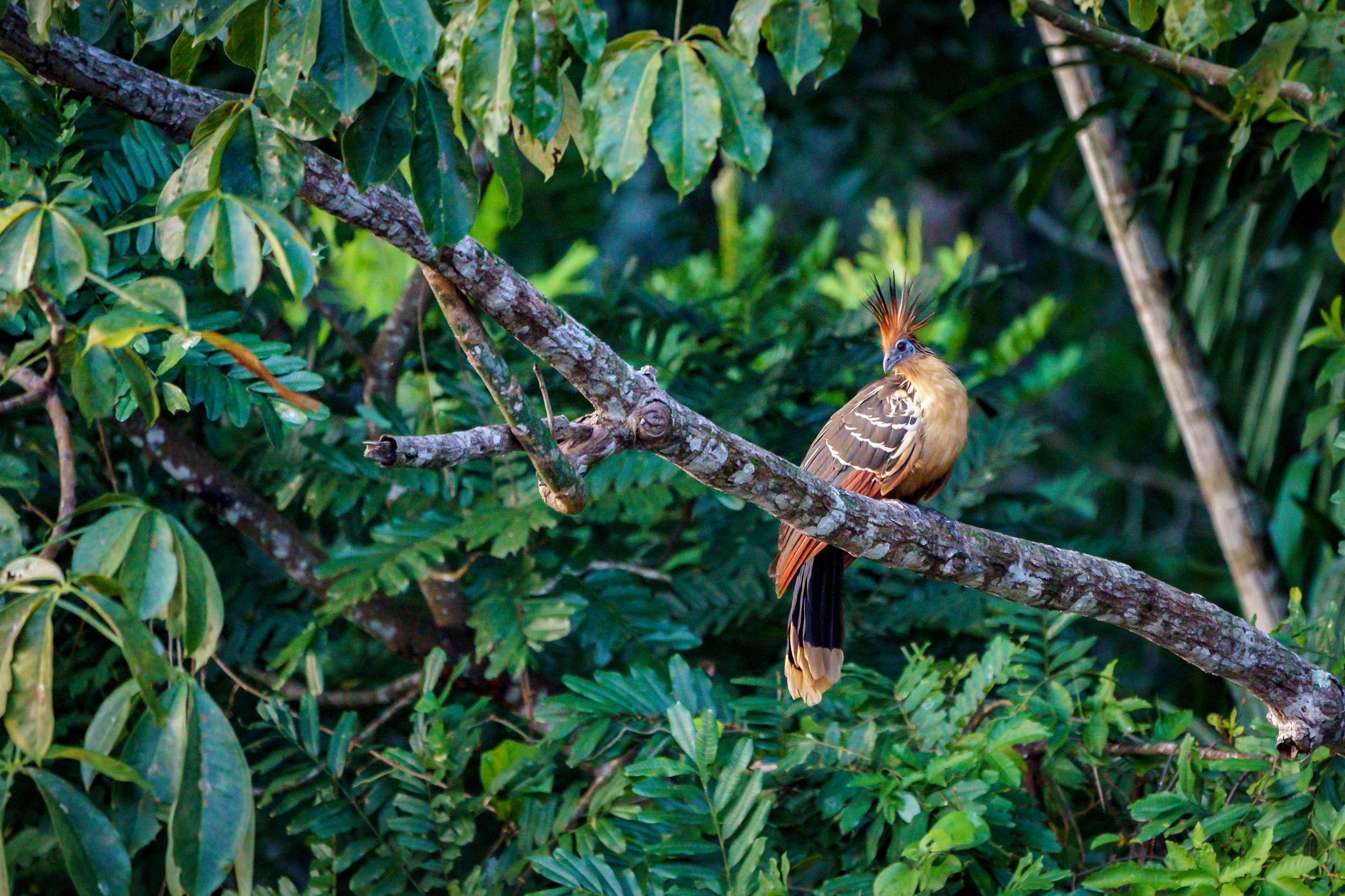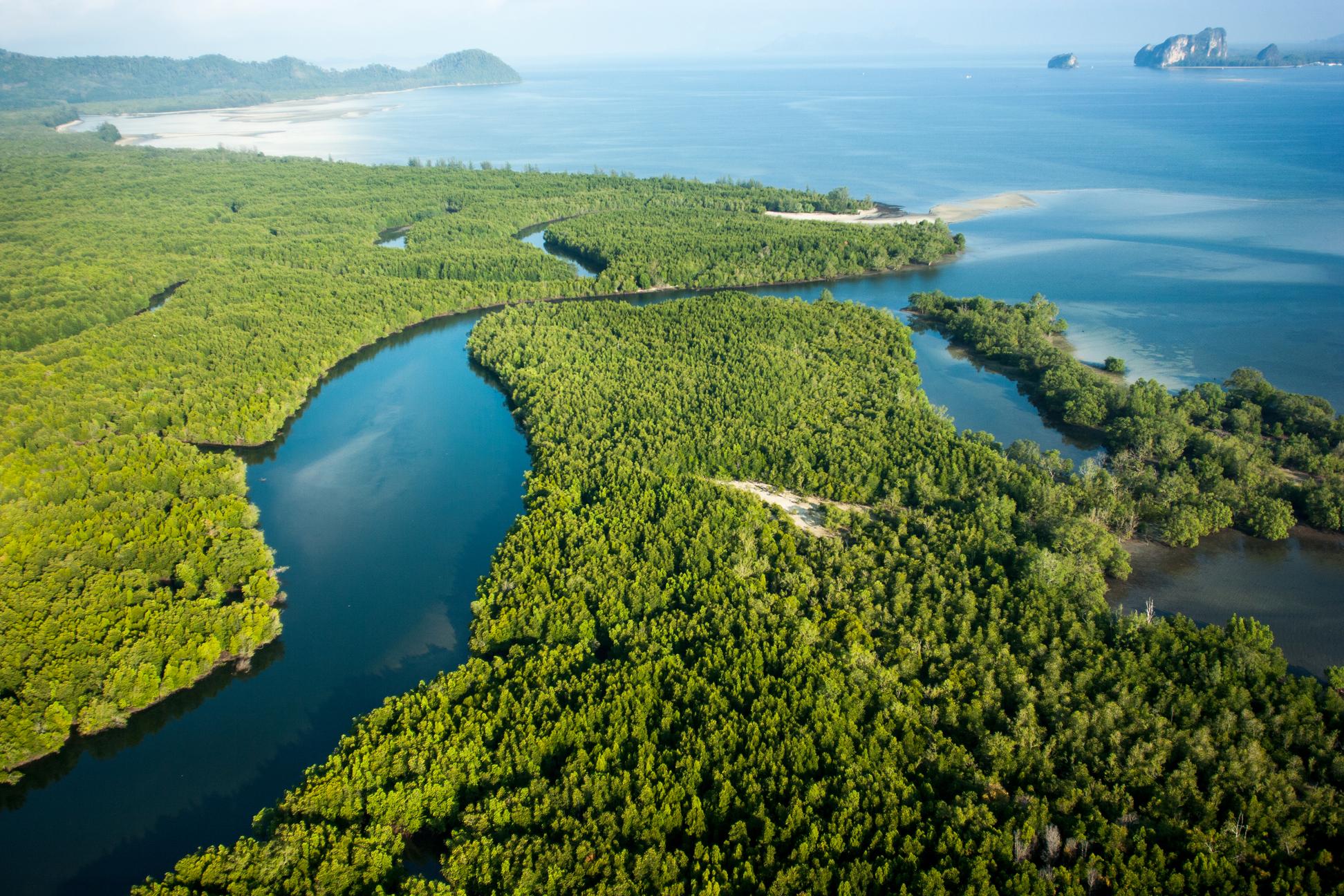
The Amazon rainforest is vital to life on Earth. Do you know why?
The Amazon rainforest is the largest tropical forest in the world — spanning nine countries and home to more than 30 million people. The region influences global weather and stores massive amounts of carbon — making it critical in the fight against climate change. Simply put, people cannot thrive without the Amazon rainforest — but right now, humans are driving this ecosystem to the brink.
Learn more about Amazonia and why we need to protect it:
Amazonia boasts the richest biodiversity of any ecosystem on the planet
This extraordinary rainforest boasts an astounding wealth of biodiversity, harboring at least 10 percent of the world’s known species.1 One region in the Ecuadorian Amazon is regarded as the most biodiverse area of land in the world2, boasting more diverse species of trees in a given hectare of forest than all of North America.
Amazonia stores (so much) carbon
The world’s forests absorb about 7.6 billion metric tons of carbon each year.3 The Amazon rainforest does much of the heavy lifting, removing a yearly total of 1.2 billion metric tons of carbon from the atmosphere.4 But if forest loss continues at current rates, the region could lose its ability to absorb and store carbon, eventually becoming a net source of emissions.
Indigenous people legally own more than a quarter of the Amazon
manage 35 percent of Latin America’s forests and nearly half of the forests in the Amazon Basin.5 Studies have shown that areas under the secure management of Indigenous peoples are typically better protected and better managed than those under government control.6
Amazonia is shrinking fast
In the past 60 years, more than 13 percent of the Amazon has been deforested7 — an area nearly the size of Alaska.8

Amazonia could transform from a rainforest into a savanna
As more trees are cleared, the forest is losing its ability to retain moisture. If this cycle of destruction continues, the rainforest will be pushed to an ecological tipping point — gradually turning into a dry savanna.
Protecting the Amazon rainforest can help halt climate change
Protecting the Amazon and other tropical forests could get us at least 30 percent9 of the way to solving the climate crisis, while also providing a host of additional benefits — filtering fresh water, providing breathable air — that other climate solutions don’t offer.
The Amazon rainforest can — and must — be restored
Like most ecosystems, the Amazon rainforest is incredibly adaptive and resilient when properly cared for. By 2025, Conservation International aims to conserve 80 percent of the forest while improving human well-being in the region.
You can be a part of solution
From establishing a carbon tax to creating new protected areas, countries across Amazonia are working tirelessly to ensure this tropical forest is conserved. Want to do your part? Here are five ways you can help fight climate change.
Related content
References
- Guayasamin, J. M., Ribas, C. C., Carnaval, A. C., Carrillo, J. D., Hoorn, C., Lohmann, L. G., Riff, D., Ulloa Ulloa, C., & Albert, J. S. (2021). Chapter 2: Evolution of Amazonian biodiversity. In Amazon Assessment Report 2021. UN Sustainable Development Solutions Network (SDSN). https://doi.org/10.55161/czwn4679
- Bass MS, Finer M, Jenkins CN, Kreft H, Cisneros-Heredia DF, McCracken SF, et al. (2010) Global Conservation Significance of Ecuador’s Yasuní National Park. PLoS ONE 5(1): e8767. https://doi.org/10.1371/journal.pone.0008767
- Harris, N.L., Gibbs, D.A., Baccini, A. et al. Global maps of twenty-first century forest carbon fluxes. Nat. Clim. Chang. 11, 234–240 (2021). https://doi.org/10.1038/s41558-020-00976-6
- Harris, N., Gibbs, D. (2021, January 21). Forests Absorb Twice As Much Carbon As They Emit Each Year. World Resources Institute. https://www.wri.org/insights/forests-absorb-twice-much-carbon-they-emit-each-year
- Forest governance by indigenous and tribal peoples. An opportunity for climate action in Latin America and the Caribbean. (2021). FAO. https://doi.org/10.4060/cb2953en
- Porter-Bolland, L., Ellis, E. A., Guariguata, M. R., Ruiz-Mallén, I., Negrete-Yankelevich, S., & Reyes-García, V. (2012). Community managed forests and forest protected areas: An assessment of their conservation effectiveness across the tropics. In Forest Ecology and Management (Vol. 268, pp. 6–17). Elsevier BV. https://doi.org/10.1016/j.foreco.2011.05.034
- Nobre, C. A., Sampaio, G., Borma, L. S., Castilla-Rubio, J. C., Silva, J. S., & Cardoso, M. (2016). Land-use and climate change risks in the Amazon and the need of a novel sustainable development paradigm. In Proceedings of the National Academy of Sciences (Vol. 113, Issue 39, pp. 10759–10768). Proceedings of the National Academy of Sciences. https://doi.org/10.1073/pnas.1605516113
- Butler, R.A. (2022, February 25). 10 Facts about the Amazon Rainforest in 2022. Mongabay. https://rainforests.mongabay.com/amazon/amazon-rainforest-facts.html
- Griscom, B. W., Adams, J., Ellis, P. W., Houghton, R. A., Lomax, G., Miteva, D. A., Schlesinger, W. H., Shoch, D., Siikamäki, J. V., Smith, P., Woodbury, P., Zganjar, C., Blackman, A., Campari, J., Conant, R. T., Delgado, C., Elias, P., Gopalakrishna, T., Hamsik, M. R., … Fargione, J. (2017). Natural climate solutions. In Proceedings of the National Academy of Sciences (Vol. 114, Issue 44, pp. 11645–11650). Proceedings of the National Academy of Sciences. https://doi.org/10.1073/pnas.1710465114